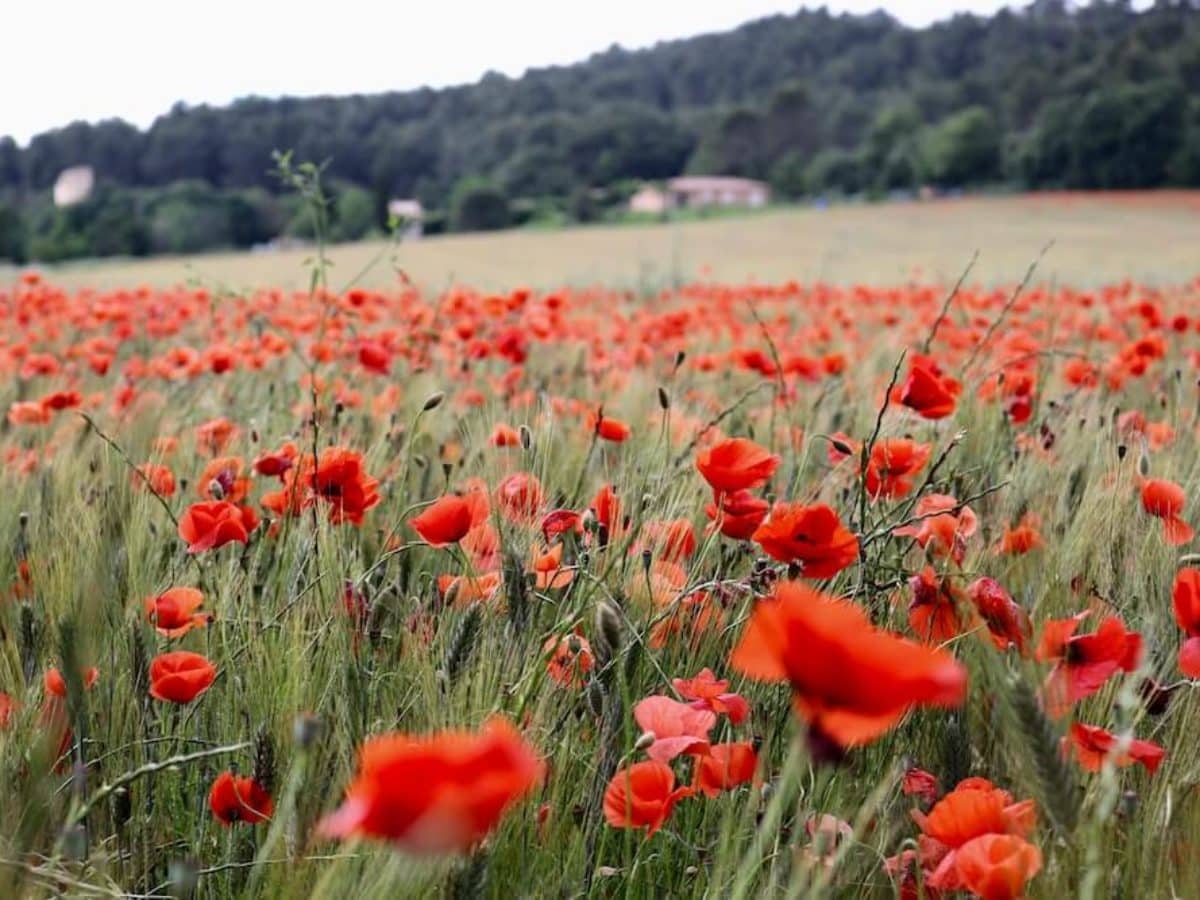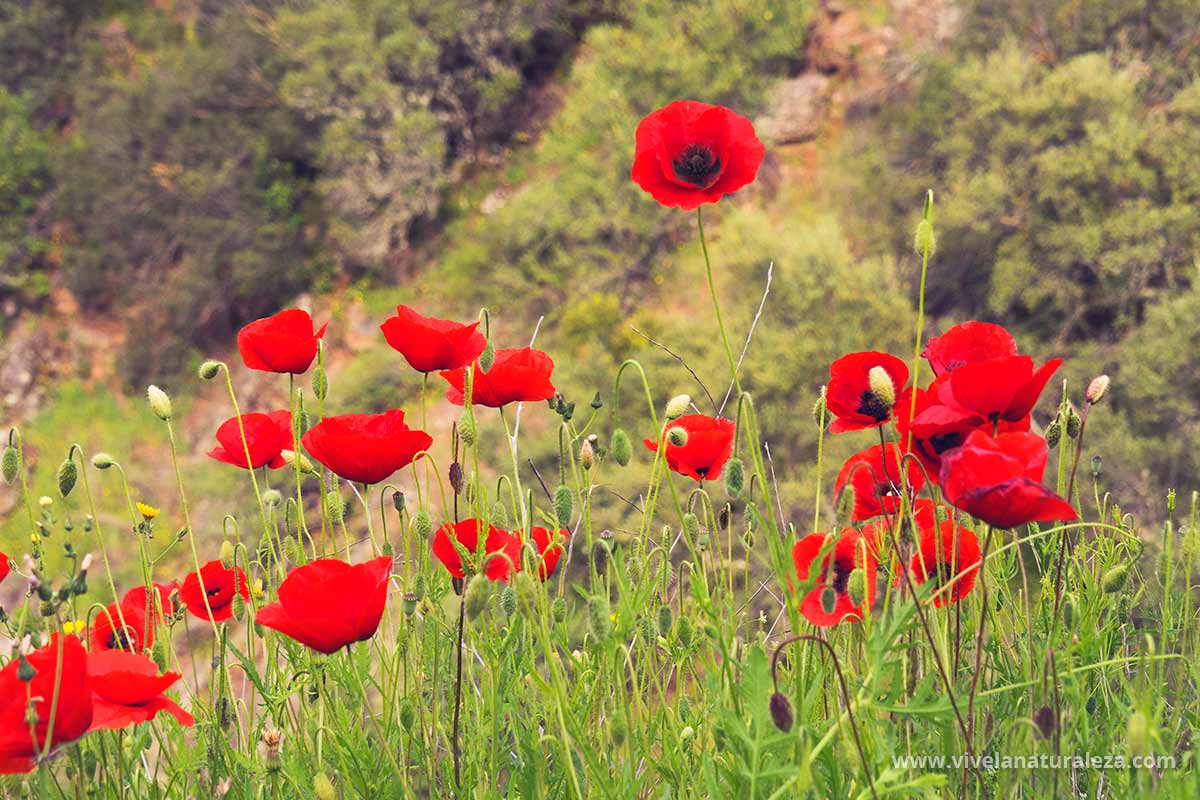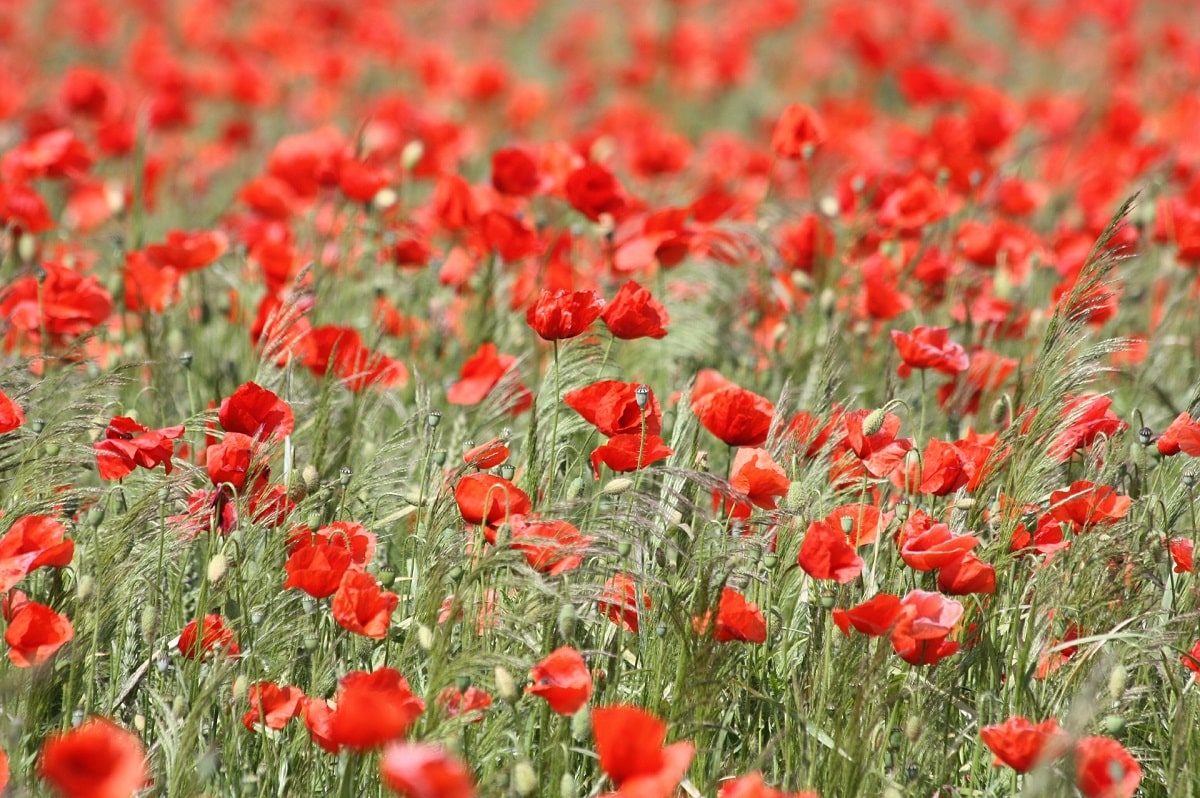
La red poppy It is one of the plants that can reach almost half a meter in height and have long stems. It usually grows in the field although there are many people who use it to grow in their gardens. Not only the red poppy attracts attention, but almost any type of poppy attracts the attention of the whole world.
Therefore, we are going to explain how to grow the red poppy, its characteristics and the uses it is given.
Key features

It is a beautiful and strong plant with long stems, up to half a meter in height, ending in an upright bud or an incredibly large and beautiful flower, usually red, although there are varieties of other colors as well. But no matter what color it is, it will attract everyone's attention. They come from Asia and Eurasia, where they grow wild.
Her English name is Poppy and her scientist is Papaver Rhoes. Like almost all words beginning with A, the name poppy comes from the Arabic "Habbapaura," which comes from the Latin scientific names Seed, habb, and Papaver.
They come from warm and temperate climates, although they can be grown in the vast majority of climates. Since cultivation is so widespread throughout the world, there is already a wide variety of each type of climate or resistant plants.
The red poppy is a herbaceous plant that does not exceed 90 or 100 cm in height and about 60 cm in diameter, which, like all angiosperms, presents all the characteristic parts (root, stem, leaves, flowers, fruits and seeds). The root of the red poppy is fine, its stem is straight, green and covered with hairs. Its leaves have many alternate lobes, have jagged edges and pointed tips, and are green in color.
red poppy flowers They are solitary, radially symmetrical, with four petals, which, as its common name indicates, are red in color and also have a black spot at the base of the petals. The calyx consists of two sepals. Both the sepals and the petals can fall off the flower. It has many stamens, with blue and/or brown anthers around discoid stigmas, its ovaries are superior. Its flowers are hermaphrodites.
red poppy fruit

The fruit of the red poppy is a dry, capsule-shaped, oval, porous, dehiscent fruit, rich in seeds, which are released through open pores in the upper part. The capsule measures approximately 1,46 x 0,96 cm. The number of bolls in the red poppy has been found to vary, so this variety has between 16 and 125 capsules per plant. However, some researchers state that the number of flowers and capsules per plant can reach 400, depending on the fertility of the soil and the type of vegetation associated with it. The fruit is used for decoration. Its seeds are oily.
Like other members of the poppy family, the poppy plant produces latex throughout the body when the tissue is broken. The anatomy of this poppy is typical of dicotyledonous plants.
Reproduction
The pollination of the red poppy is carried out thanks to the work of insects, in this task mainly bees and bumblebees intervene; after pollination occurs, after about 3-4 weeks, the flowers transform into fruits that contain a large number of seeds that will grow when released from the stomata it possesses. Seed propagation and germination can develop new red poppy plants. The plants take about three months to germinate and bear fruit. Red poppy seeds need intense heat to germinate and can go dormant for a while.
It is an annual plant that flowers from June to October and gives seeds in July.
Properties of the red poppy
Poppy seeds are widely known for their pharmacological effects, thanks to their active principles such as: anthocyanins, alkaloids, mucilages and flavonoids. Its petals, capsules and seeds are commonly used in infusions, syrups, extracts or tinctures. Properties include its sedative and antispasmodic properties, which make it ideal for treating coughs of all ages, including asthma attacks and bronchitis.
Another of the properties of its compounds are its antiseptic-healing properties, so it can be used to clean and heal wounds. It has also been reported to be beneficial in patients with conjunctivitis. Thanks to its sedative effect, it helps to calm and relax the body and to achieve restful sleep in times of emotional stress.
Recent studies have shown that poppy extract can be used in the in vitro maturation of sheep oocytes in experimental tests.
Red Poppy Side Effects
There is some debate about the location of the side effects and/or the degree of toxicity of the red poppy, with some arguing that the plant is not toxic., while others believe it to be slightly toxic to mammals such as livestock. In humans, there have been cases of poisoning from consumption of poppy seeds, especially in Turkey, adverse or toxic effects include nausea, vomiting, seizures and some changes in the central nervous system, which are reversible after application of treatment. . Advised medicinal plants, do not increase the recommended dose.
How to grow the red poppy

Poppy plantations have been associated with agriculture since ancient times, since their life cycle has always been adapted to most cereal crops.
However, poppies require some care to thrive. What you should know is:
- They are best plants in dry, poor soil and will receive plenty of sun.l (although they will also survive in partial shade).
- They don't need a lot of water, so they do not tolerate waterlogging. As for poppies, it is better to water less than too much. A few times a week is enough (it all depends on the weather and the season).
- Nutritionally, they prefer dry and poor substrates.
- They do not tolerate transplants well., so if you want to cultivate this species, do it in its final location.
- They reproduce by seeds.
I hope that with this information you can learn more about how to grow the red poppy and what its characteristics are.